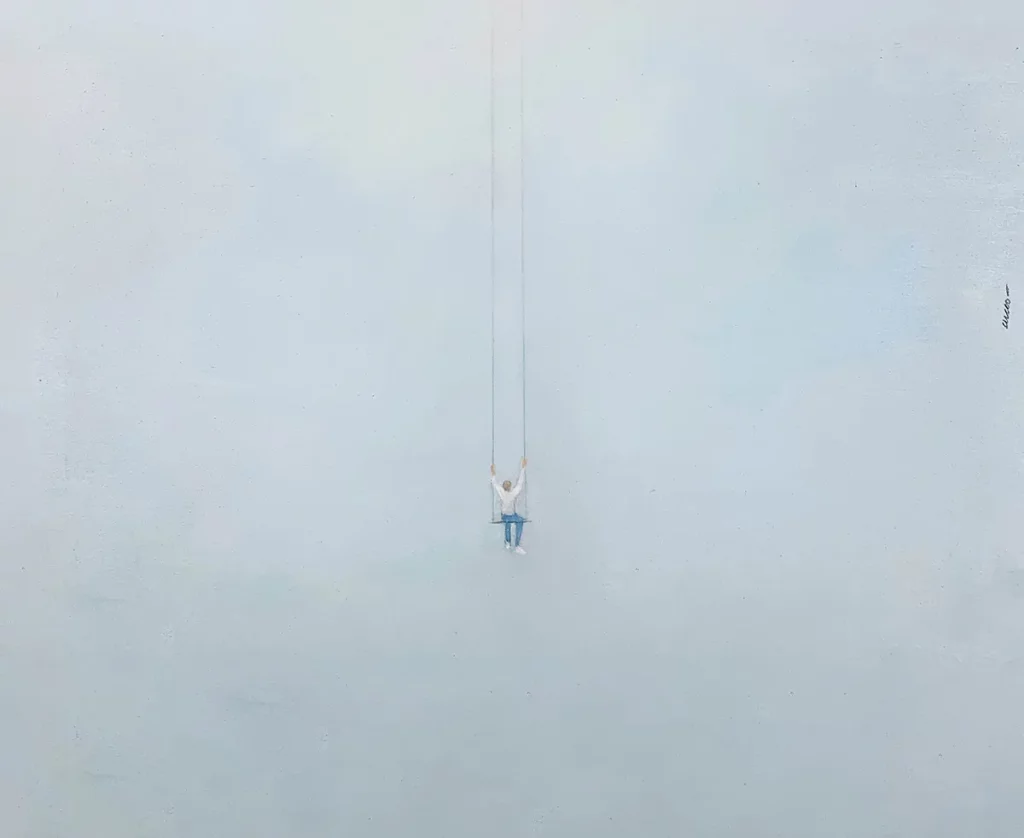The Tragic Miracle of Consciousness: John Steinbeck on the True Meaning and Purpose of Hope
INSPIRATIONAL, 23 Jan 2023
Maria Popova | The Marginalian – TRANSCEND Media Service
“Hope is a diagnostic human trait and this simple cortex symptom seems to be a prime factor in our inspection of our universe.”
We hope, we despair, and then we hope again — that is how we stay afloat in the cosmos of uncertainty that is any given life. Just as the universe exists because, by some accident of chance we are yet to fathom, there is more matter than antimatter in it, we exist — and go on existing — because there is more hope than despair in us. “Hope,” the great Czech dissident playwright turned president Václav Havel wrote, “is not the same as joy that things are going well, or willingness to invest in enterprises that are obviously headed for early success, but, rather, an ability to work for something because it is good, not just because it stands a chance to succeed.” Hope, I have long believed, is the antidote to cynicism — that most cowardly and self-defeating of existential orientations. Hope, Rebecca Solnit reminds us, “is a gift you don’t have to surrender, a power you don’t have to throw away.” For it is a power indeed — the power to pull ourselves up by our bootstraps from even the darkest and most dispiriting of circumstances, so that we may go on reaching for the light. In this capacity, hope might be our greatest evolutionary adaptation — the mitochondria of our spiritual metabolism, the opposable thumb of our grip on life.
That function of hope is what John Steinbeck (February 27, 1902–December 20, 1968) explores from an uncommonly illuminating perspective in a portion of The Log from the Sea of Cortez (public library) — his forgotten masterpiece about how to think, wrested from a marine biology expedition into the Gulf of California at the outbreak of a World War.

Steinbeck weighs what we are against the living reality — the living brutality — of other species, considering hope as our adaptive calibration of what is most brutal in our own nature. Writing two years before his humanistic reckoning with hope and despair, he reflects:
We have looked into the tide pools and seen the little animals feeding and reproducing and killing for food. We name them and describe them and, out of long watching, arrive at some conclusion about their habits so that we say, “This species typically does thus and so,” but we do not objectively observe our own species as a species, although we know the individuals fairly well. When it seems that men may be kinder to men, that wars may not come again, we completely ignore the record of our species. If we used the same smug observation on ourselves that we do on hermit crabs we would be forced to say, with the information at hand, “It is one diagnostic trait of Homo sapiens that groups of individuals are periodically infected with a feverish nervousness which causes the individual to turn on and destroy, not only his own kind, but the works of his own kind. It is not known whether this be caused by a virus, some airborne spore, or whether it be a species reaction to some meteorological stimulus as yet undetermined.” Hope, which is another species diagnostic trait — the hope that this may not always be — does not in the least change the observable past and present. When two crayfish meet, they usually fight. One would say that perhaps they might not at a future time, but without some mutation it is not likely that they will lose this trait. And perhaps our species is not likely to forgo war without some psychic mutation which at present, at least, does not seem imminent. And if one place the blame for killing and destroying on economic insecurity, on inequality, on injustice, he is simply stating the proposition in another way. We have what we are. Perhaps the crayfish feels the itch of jealousy, or perhaps he is sexually insecure. The effect is that he fights. When in the world there shall come twenty, thirty, fifty years without evidence of our murder trait, under whatever system of justice or economic security, then we may have a contrasting habit pattern to examine. So far there is no such situation. So far the murder trait of our species is as regular and observable as our various sexual habits.

The Log from the Sea of Cortez is very much an admonition against the traps of teleological thinking — the antiscientific tendency to explain things by some purpose they serve, usually in relation to us, as opposed to meeting reality on its own terms and accepting that things are because they are. With an eye to “how the strictures of the old teleologies infect our observation,” keeping us from seeing reality clearly and seducing us with “causal thinking warped by hope,” Steinbeck builds on this idea of hope as a diagnostic trait for our species:
Hope is a diagnostic human trait, and this simple cortex symptom seems to be a prime factor in our inspection of our universe. For hope implies a change from a present bad condition to a future better one. The slave hopes for freedom, the weary man for rest, the hungry for food. And the feeders of hope, economic and religious, have from these simple strivings of dissatisfaction managed to create a world picture which is very hard to escape. Man* grows toward perfection; animals grow toward man; bad grows toward good; and down toward up, until our little mechanism, hope, achieved in ourselves probably to cushion the shock of thought, manages to warp our whole world. Probably when our species developed the trick of memory and with it the counterbalancing projection called “the future,” this shock-absorber, hope, had to be included in the series, else the species would have destroyed itself in despair. For if ever any man were deeply and unconsciously sure that his future would be no better than his past, he might deeply wish to cease to live… In saying that hope cushions the shock of experience, that one trait balances the directionalism of another, a teleology is implied, unless one know or feel or think that we are here, and that without this balance, hope, our species in its blind mutation might have joined many, many others in extinction.
But this shock-absorber of survival serves another, far subtler purpose as an emblem of our incompleteness, reminding us, as James Baldwin knew, that “nothing is fixed”; reminding us, as Lewis Thomas knew, that we are a fragile species still in its adolescence. Steinbeck considers hope as our valve of becoming:
We have made our mark on the world, but we have really done nothing that the trees and creeping plants, ice and erosion, cannot remove in a fairly short time… In spite of overwhelming evidence to the contrary, the trait of hope still controls the future… Man in his thinking or reverie status admires the progression toward extinction, but in the unthinking stimulus which really activates him he tends toward survival. Perhaps no other animal is so torn between alternatives. Man might be described fairly adequately, if simply, as a two-legged paradox. He has never become accustomed to the tragic miracle of consciousness. Perhaps… his species is not set, has not jelled, but is still in a state of becoming.
Complement this fragment of The Log from the Sea of Cortez — which was among the finest things I read all year — with Jane Goodall on the deepest wellspring of hope and some thoughts on hope and the remedy for despair from Nick Cave and Gabriel Marcel, then revisit Steinbeck on the art of seeing the pattern beyond the particular and his timeless advice on love.
_______________________________________
 My name is Maria Popova — a reader, a wonderer, and a lover of reality who makes sense of the world and herself through the essential inner dialogue that is the act of writing. The Marginalian (which bore the unbearable name Brain Pickings for its first 15 years) is my one-woman labor of love, exploring what it means to live a decent, inspired, substantive life of purpose and gladness. Founded in 2006 as a weekly email to seven friends, eventually brought online and now included in the Library of Congress permanent web archive, it is a record of my own becoming as a person — intellectually, creatively, spiritually, poetically — drawn from my extended marginalia on the search for meaning across literature, science, art, philosophy, and the various other tendrils of human thought and feeling. A private inquiry irradiated by the ultimate question, the great quickening of wonderment that binds us all: What is all this? (More…)
My name is Maria Popova — a reader, a wonderer, and a lover of reality who makes sense of the world and herself through the essential inner dialogue that is the act of writing. The Marginalian (which bore the unbearable name Brain Pickings for its first 15 years) is my one-woman labor of love, exploring what it means to live a decent, inspired, substantive life of purpose and gladness. Founded in 2006 as a weekly email to seven friends, eventually brought online and now included in the Library of Congress permanent web archive, it is a record of my own becoming as a person — intellectually, creatively, spiritually, poetically — drawn from my extended marginalia on the search for meaning across literature, science, art, philosophy, and the various other tendrils of human thought and feeling. A private inquiry irradiated by the ultimate question, the great quickening of wonderment that binds us all: What is all this? (More…)
Go to Original – themarginalian.org
Tags: Inspirational
DISCLAIMER: The statements, views and opinions expressed in pieces republished here are solely those of the authors and do not necessarily represent those of TMS. In accordance with title 17 U.S.C. section 107, this material is distributed without profit to those who have expressed a prior interest in receiving the included information for research and educational purposes. TMS has no affiliation whatsoever with the originator of this article nor is TMS endorsed or sponsored by the originator. “GO TO ORIGINAL” links are provided as a convenience to our readers and allow for verification of authenticity. However, as originating pages are often updated by their originating host sites, the versions posted may not match the versions our readers view when clicking the “GO TO ORIGINAL” links. This site contains copyrighted material the use of which has not always been specifically authorized by the copyright owner. We are making such material available in our efforts to advance understanding of environmental, political, human rights, economic, democracy, scientific, and social justice issues, etc. We believe this constitutes a ‘fair use’ of any such copyrighted material as provided for in section 107 of the US Copyright Law. In accordance with Title 17 U.S.C. Section 107, the material on this site is distributed without profit to those who have expressed a prior interest in receiving the included information for research and educational purposes. For more information go to: http://www.law.cornell.edu/uscode/17/107.shtml. If you wish to use copyrighted material from this site for purposes of your own that go beyond ‘fair use’, you must obtain permission from the copyright owner.
